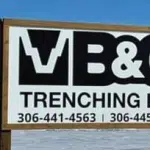
Preparing for the possibility of evacuation of livestock
With the sunny, warm, and windy weather comes dry field and forest conditions. Wildfires are a very real risk.
Saskatchewan Cattlemen’s Association CEO Grant McLellan said everyday activities could start a fire by accident.
“Especially when areas are so dry right now, we want to remind producers about activities such as running out with the quad. Be sure and watch for any sparks that may happen,” McLellan said. “Really trying to avoid any opportunity for a fire to start because it is extremely dry.”
McLellan said do not burn sloughs or flax piles without checking with your RM and local fire station first. He said what’s happening in Alberta right now is very serious, and producers in Saskatchewan need to prepare in case something similar happens here.


